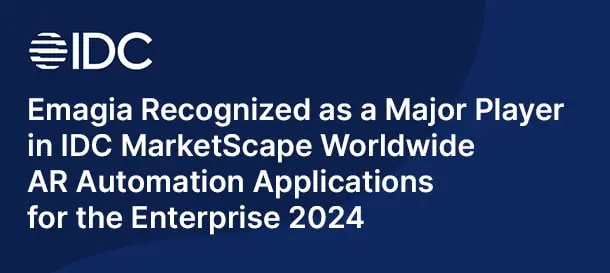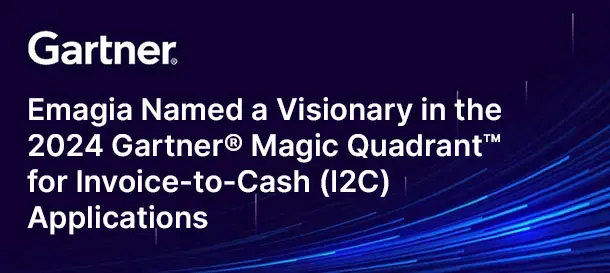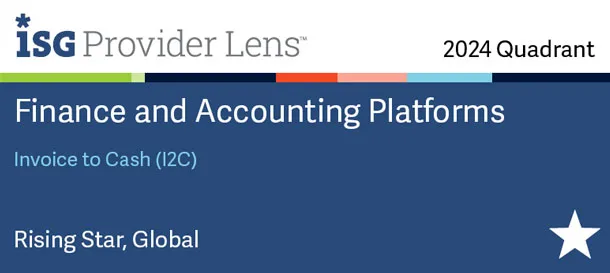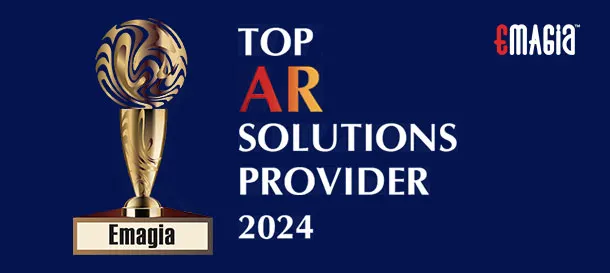Unlock Your Business’s Financial Potential: Mastering Accounts Receivable
Ever feel like you’re running a successful business, but your bank account doesn’t seem to agree? You’ve made sales, delivered great products or services, and you have invoices piling up that are waiting to be paid. That gap between when you make a sale and when you actually get the money can be a real problem. It’s what we call a cash flow crisis, and it’s a super common issue for businesses of all sizes. The good news is, you’re not helpless. The solution lies in a crucial part of your business: accounts receivable.
Accounts receivable isn’t just about sending out invoices. It’s an active, dynamic process that, when managed well, can be your secret weapon against financial stress. By implementing a few key strategies, you can shorten your payment cycles, reduce bad debt, and ensure a steady, predictable flow of cash into your business. In this detailed guide, we’ll walk you through seven essential best practices that you can start implementing right now to transform your financial health.
The Critical Link Between Accounts Receivable and Cash Flow Stability
Before we dive into the nuts and bolts of the best practices, it’s important to really understand *why* accounts receivable (AR) is so foundational to your cash flow. Think of your business’s cash flow as its lifeblood. It’s the money that comes in and goes out. When more money is going out than coming in, you have a cash flow problem.
Your accounts receivable is a direct representation of the money owed to you. Every time you send an invoice, it becomes an account receivable. The longer that invoice goes unpaid, the longer your business is essentially acting as a bank for your customer. This can create a significant financial strain, preventing you from paying your own bills, investing in new projects, or even covering payroll. A healthy accounts receivable process is the direct path to a healthy cash flow. It’s not just about getting paid; it’s about getting paid on time, every time, in a way that fuels your business’s growth and stability.
Best Practice 1: Perfecting Your Credit Policy and Customer Onboarding
They say an ounce of prevention is worth a pound of cure, and that couldn’t be more true when it comes to accounts receivable. The very first line of defense against late payments and bad debt is a well-defined credit policy and a robust customer onboarding process. This isn’t about being harsh; it’s about being clear and consistent.
Developing a Clear and Enforceable Credit Policy
Your credit policy is the rulebook for your business relationship with customers. It should clearly define who you offer credit to, how much credit you’re willing to extend, and what the payment terms are. This isn’t a one-size-fits-all document. You may need to have different policies for different types of customers or industries.
- Setting the Stage for Success:
When you’re building this policy, consider your own cash flow needs. What payment terms can you realistically afford? Standard terms like “Net 30” (due in 30 days) are common, but you could also use “Net 15” or even “Net 60” depending on your industry and customer relationships. The key is to be intentional about it.
- Assessing Credit Risk:
You can’t just offer credit to everyone. Before you extend credit, you should have a process for assessing a customer’s creditworthiness. This could involve requesting financial statements for larger clients, checking with credit bureaus, or asking for trade references. Starting small with new customers and letting them earn more credit is a smart way to manage your risk.
- Being Flexible and Adaptable:
Your credit policy isn’t set in stone. As your business needs change and economic conditions shift, you should revisit and re-evaluate it. If a customer starts paying late, don’t be afraid to shorten their payment terms or lower their credit limit until they get back on track.
The Art of Customer Onboarding for Accounts Receivable Success
Onboarding is where your credit policy comes to life. It’s your opportunity to set expectations from the very beginning. A standardized onboarding checklist ensures you collect all the necessary information and that your new client fully understands your payment terms.
- Information is Power:
Gather all the essential information upfront: contact details for the person who will handle invoices, their preferred billing method, and any specific billing requirements they might have. This prevents future delays caused by incorrect information.
- Clear Communication is Key:
During the sales process, your team should clearly communicate your payment terms. Make sure the customer agrees to them and that it’s all in writing. This prevents any “I didn’t know” excuses down the line.
Best Practice 2: Streamlining Invoicing for Maximum Efficiency
An invoice is the first official step in getting paid. An inefficient or error-prone invoicing process can create a ripple effect of delays, disputes, and frustration. Making your invoicing process as smooth as possible is one of the quickest ways to improve your cash flow.
Prompt and Accurate Invoicing: The First Step to Faster Payments
The moment you deliver a product or service, the clock starts ticking. The sooner you send the invoice, the sooner you can get paid. Waiting until the end of the month to send all your invoices is a mistake. It adds an unnecessary delay to your payment cycle.
- No Room for Errors:
Every invoice should be clear, detailed, and accurate. It should include an invoice number, the date, a detailed list of what was sold, the total amount due, your payment terms, and all the available payment methods. A simple mistake—like a typo in an address or an incorrect line item—can cause a customer’s accounting department to reject the invoice, leading to significant delays.
Embracing Digital and Automated Invoicing Solutions
If you’re still using paper invoices, it’s time to move to the digital world. Digital invoicing is faster, more reliable, and much easier to track. You can use automation software to generate and send invoices automatically the moment an order is fulfilled.
- The Power of Automation:
Automated invoicing can reduce manual errors and ensure consistency. It also allows for automatic tracking and audit trails, so you always know where an invoice is in its lifecycle. This saves you and your team countless hours of administrative work.
Best Practice 3: Making Payments as Easy as Possible for Customers
You want to remove any and all friction from the payment process. If it’s difficult for a customer to pay you, they will find an excuse to delay it. Offering multiple, convenient payment options is a crucial accounts receivable best practice.
Offering a Variety of Payment Methods
Not every customer wants to pay with a check. In fact, many younger businesses may not even use them. By providing multiple payment options, you can cater to a broader range of customers and their preferences.
- Popular Payment Options:
Consider accepting credit cards, ACH transfers (Automated Clearing House), and wire transfers. Credit cards can be expensive due to processing fees, but they also provide an immediate payment and can be a great option for smaller, high-volume transactions. ACH transfers are often a low-cost, secure alternative for larger payments.
Utilizing a Customer Payment Portal for Enhanced Experience
A dedicated online payment portal is a game-changer. It gives customers a central place to view all their invoices, check their payment history, and pay with the method of their choice. This self-service approach saves your team time by reducing the number of billing-related inquiries.
Best Practice 4: Proactive and Consistent Follow-Up Strategies
Once an invoice is sent, your job isn’t over. A “set it and forget it” mentality is a recipe for a cash flow crisis. To ensure timely payments, you need to be proactive and systematic with your follow-up.
Establishing a Dunning Process for Timely Reminders
A dunning process is simply a standardized series of communications you send to customers as an invoice approaches and passes its due date. This process should be professional, polite, and consistent.
- Reminder Schedule:
A good dunning schedule might look like this:
- Before the due date: A friendly reminder email a few days before the invoice is due.
- On the due date: A second reminder on the day the payment is due.
- After the due date: A series of increasingly urgent reminders at 7, 15, and 30 days past due.
- Personalized Communication:
For invoices that are significantly past due, a phone call is often more effective than an email. A personal conversation can help you understand the reason for the delay and work with the customer to find a solution.
Building Positive Customer Relationships Through Communication
Remember, the goal is not to alienate your customers. A cash flow crisis is not an excuse to be rude. Your follow-up should be professional and empathetic. Sometimes a customer is facing their own challenges, and a polite, understanding approach can preserve the relationship while still getting you paid.
Best Practice 5: Incentivizing Early Payments and Implementing Late Fees
You can use both carrots and sticks to encourage timely payments. On one hand, you can reward customers who pay early. On the other, you can have a clear policy for penalizing late payments. Both strategies, when used correctly, can significantly improve your cash flow.
Early Payment Discounts: A Win-Win Strategy
An early payment discount, such as “2/10, Net 30,” can be a powerful incentive. This means a customer gets a 2% discount if they pay within 10 days, otherwise, the full amount is due in 30 days. This strategy gives customers a financial reason to prioritize your invoice.
- Calculating the Value:
You’ll need to calculate whether the cost of the discount is worth the benefit of faster cash. For many businesses, a small discount is a small price to pay for the improved liquidity and reduced stress that comes with a faster payment cycle.
Defining and Enforcing a Late Fee Policy
Your credit policy should clearly state the consequences for late payments. This could be a fixed fee or a percentage of the overdue amount. Whatever you decide, you must be consistent in enforcing it.
- Clarity is Crucial:
The late fee policy must be stated clearly on every invoice and in your initial contract. There should be no surprises. This professionalism can encourage customers to respect your payment terms.
Best Practice 6: Leveraging Technology and Automation for a Competitive Edge
In today’s business world, manual accounts receivable processes are a major handicap. They are time-consuming, prone to human error, and can’t keep up with the demands of a growing business. Leveraging technology isn’t just a luxury; it’s a necessity.
The Benefits of Accounts Receivable Automation Software
Accounts receivable automation software can transform your financial operations. It can handle repetitive, administrative tasks, freeing up your team to focus on more strategic work, like managing customer relationships and resolving disputes.
- Real-Time Visibility:
These systems provide real-time dashboards that give you a clear, up-to-the-minute view of your accounts receivable. You can see which invoices are outstanding, which customers are late, and what your Days Sales Outstanding (DSO) is. This kind of insight is invaluable for making informed business decisions.
- Seamless Integration:
The best solutions integrate seamlessly with your existing ERP, CRM, and accounting software. This ensures that data flows smoothly between systems, eliminating the need for double data entry and reducing the risk of errors.
Best Practice 7: Measuring and Analyzing Key Performance Indicators (KPIs)
You can’t improve what you don’t measure. To truly master accounts receivable, you need to track key metrics and use that data to refine your processes. These insights can help you identify trends, pinpoint problems, and make data-driven decisions that will directly impact your cash flow.
Essential Accounts Receivable Metrics to Track
There are several important KPIs that every business should be monitoring.
- Days Sales Outstanding (DSO):
This is one of the most important metrics. It measures the average number of days it takes for your business to collect payment after a sale. A lower DSO means you’re getting paid faster, which is excellent for your cash flow.
- Collection Effectiveness Index (CEI):
This metric measures how effective your collection efforts are. It gives you a percentage that tells you how much of your collectible accounts you actually collected. A higher CEI indicates a more efficient collection process.
- Accounts Receivable Aging:
This report categorizes your outstanding invoices by how long they’ve been past due (e.g., 1-30 days, 31-60 days, 61-90 days). This is a critical tool for prioritizing your collection efforts. The older an invoice gets, the less likely it is to be paid.
Using Data to Drive Continuous Improvement
Once you have this data, you can use it to make better decisions. For example, if your DSO is creeping up, you can investigate which customers or processes are causing the delay. This data-driven approach is what separates a good accounts receivable process from a great one.
How Modern Technology Solves Your Accounts Receivable Challenges
For many businesses, the sheer volume and complexity of accounts receivable tasks can be overwhelming. This is where advanced solutions come into play, offering a way to not just manage, but to truly master your cash flow. Emagia’s intelligent platform, for example, is designed to take the friction out of the entire order-to-cash cycle using cutting-edge AI, machine learning, and advanced analytics.
Emagia’s platform can automate repetitive tasks, such as invoice generation, delivery, and payment reminders, ensuring that your team can focus on building relationships and resolving complex issues. By providing real-time, AI-driven insights into customer payment behavior and risk, the system helps you make proactive decisions, reducing credit risk and bad debt before they become a problem. Its intelligent collections automation prioritizes outreach efforts and tailors communications to specific customer segments, boosting collector productivity.
Furthermore, the platform’s cash application solution uses AI to automatically match payments to open invoices, even with incomplete remittance data. This technology doesn’t just improve efficiency; it provides the strategic foresight you need to predict cash inflows, improve liquidity planning, and ultimately, grow your business with confidence.
Frequently Asked Questions About Accounts Receivable Best Practices
What is accounts receivable and why is it important for my business?
Accounts receivable (AR) refers to the money that your customers owe your business for goods or services they have received but not yet paid for. It’s crucial because it represents a significant portion of your company’s current assets and directly impacts your cash flow.
How can I improve my company’s Days Sales Outstanding (DSO)?
You can improve your DSO by implementing several strategies, including sending invoices faster, offering early payment discounts, making it easier for customers to pay you with multiple options, and establishing a consistent and proactive follow-up process for overdue invoices.
What are the benefits of automating my accounts receivable process?
Accounts receivable automation offers numerous benefits, such as reducing manual errors, accelerating cash flow, increasing team efficiency, providing real-time visibility into your finances, and improving the overall customer experience with faster and more accurate billing.
What should I include in a customer credit policy?
A strong credit policy should outline the criteria for extending credit to new and existing customers, define payment terms, and clearly state the consequences for late payments, such as penalties or a reduction in credit limits.
How do I handle a customer who consistently pays late?
Start with a polite conversation to understand the reason for the delay. You can then try to work with them to set up a payment plan. If the issue persists, you may need to re-evaluate their credit terms, require a deposit on future orders, or, as a last resort, turn the account over to a collections agency.
What is an A/R aging report?
An A/R aging report is a document that lists all your outstanding invoices and groups them based on how long they have been past due (e.g., 1-30 days, 31-60 days, etc.). It’s a vital tool for prioritizing your collections and identifying which accounts are most at risk of becoming bad debt.
Can offering an early payment discount hurt my profit margins?
While an early payment discount does slightly reduce the amount of revenue you collect, the benefit of having cash in hand sooner often outweighs that small cost. It can significantly improve your cash flow and reduce the time and effort your team spends on collections.



